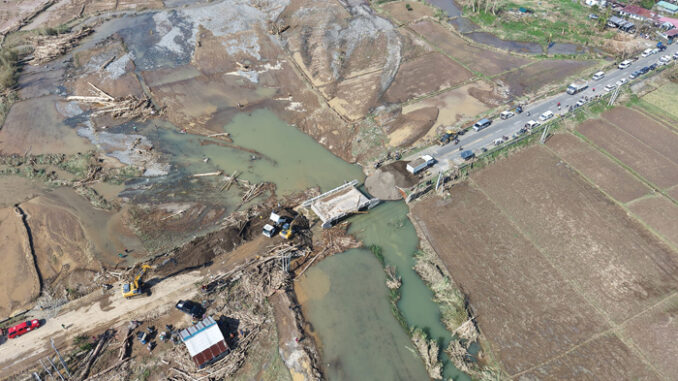
Typhoon “Pepito” is forecast to rapidly intensify today (Saturday), possibly reaching super typhoon category before its landfall this evening or early Sunday morning, according to the latest bulletin of state weather bureau PAGASA.
Severe Tropical Storm “Ofel” further weakened and is now outside of the Philippine area of responsibility (PAR), but could still reenter the area.
“Despite exiting the PAR region, a tropical cyclone wind signal may still be raised over the areas of Extreme Northern Luzon,” PAGASA said.
Hundreds of people fled Friday as “Pepito” bore down on the country, threatening yet more destruction even as rescuers tried to reach people stranded on rooftops by the last tropical cyclone.
“Pepito” is the sixth major storm to have battered the country in the last three weeks.
Rescuers on Friday were still scrambling to reach residents stranded on rooftops in northern Luzon island, while authorities began evacuating hundreds of people from Catanduanes, which will likely be the first landmass hit directly by “Pepito” today.
“We expect thousands more to evacuate in the hours before landfall,” Roberto Monterola, operations chief of the Catanduanes civil defense office, told Agence France Presse.
“We do not have enough evacuation centers, so some of them will be sheltering with neighbors who own houses made of stronger materials.”
Fash floods driven by “Ofel” struck 10 largely evacuated villages around the town of Gonzaga in Cagayan province, local rescue official Edward Gaspar said.
“We rescued a number of people who had refused to move to the shelters and got trapped on their rooftops,” Gaspar added.
He said two houses were swept away and many others were damaged while the farming region’s livestock industry took a heavy blow.
“We have yet to account for the exact number of hogs, cattle and poultry lost from the floods, but I can say the losses were huge,” Gaspar said.
Motorist Janford Bonifacio said he saw Gonzaga residents digging for their animals, many dead but some still alive, beneath mud and uprooted trees.
“I saw people digging for their cattle that were still alive, and some were trying to save their hogs which they found among the logs,” he said.
Department of Public Works and Highways Secretary Manuel Bonoan placed its District Disaster and Incident Management teams in Northern Luzon on Friday under “blue alert” in light of “Pepito.”
“Blue Alert” signifies readiness for a full-scale disaster management where all resources are activated and made available for deployment.
Meanwhile, teams in the Cordillera Administrative Region and Cagayan Valley are still under Red Alert, as they continue ongoing clearing operations following the effects of previous tropical cyclones “Nika” and “Ofel.”
Tropical cyclones “Nika” and “Ofel” affected over 419,900 people across several regions, according to the National Disaster Risk Reduction and Management Council on Friday.
As per the latest report, a total of 3,214 homes were damaged—2,922 partially and 292 completely—with Cagayan Valley reporting the highest number of damaged homes at 2,739.
A UN assessment said the past month’s storms damaged or destroyed 207,000 houses, with 700,000 people forced to seek temporary shelter.
About 20 big storms and typhoons hit the Philippines or its surrounding waters each year, killing scores of people, but it is unusual for multiple such weather events to take place in a small window. With AFP


Be the first to comment